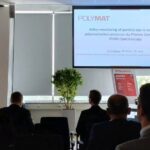The Advances in Process Analytics and Control Technologies 2022 (APACT 2022) took place in Chester, UK, on 14-16 September 2022. This edition, organised by CPACT (Centre for Process Analytics and Control Technology), coincided with the 25th anniversary of the CPACT, a “one stop shop” for advice, research and collaboration on all aspects of process analytics and control technologies, which brings industry and universities together.
The open forum for the presentation and discussion of recent scientific and engineering advances relevant to process analytics and control technologies, had following main themes:
- Advances in process engineering modelling and control
- Developments in bioprocess analysis and control
- New methodologies in data analysis and modelling
- Advances in process analysis technologies
- Measurement and modelling needs in digital manufacturing
Delegates from universities and industry presented their experimental results and introduced new concepts in the field of PACT (Process Analytics and Control Technologies). Delegates could apply for a presentation slot and there was also a selection of invited speakers. Additionally, the programme included posters and several opportunities to discuss with the respective contributors. Networking was encouraged and there were several possibilities during the breaks.
Around 120 people attended the event, representing academia and industry mainly, as well as several pharma regulators.
Two of the NanoPAT partners presented their research in the “Nanoparticle process monitoring and control” session on 15 September. Sebastian Zimmermann (from the University of Potsdam) presented their latest multi-wavelength results, fits of polydisperse, monomodal size distributions and a 6 L scale-up-process, in his oral presentation “Monitoring of silica particle precipitation by inline photon density wave spectroscopy”. Marko Simic (from BRAVE Analytics) talked in his presentation “Optofluidic Force Induction Scheme for Real-Time Monitoring of Nanoparticle Ensembles” about the main Optofluidic Force Induction (OF2i) working principle and the theory behind. Furthermore, he presented the results obtained in some of NanoPAT case studies (e.g., with Cnano).
Sebastian during his presentation
Marko during his presentation



